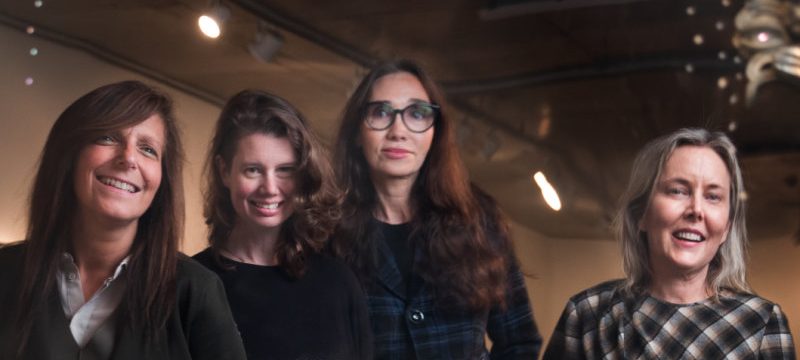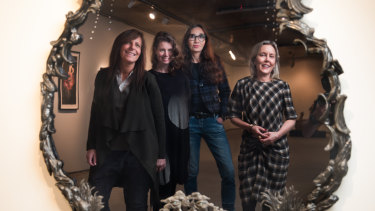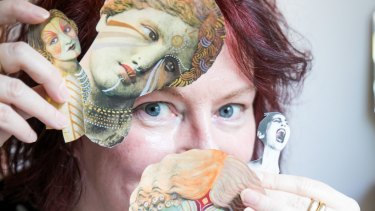Australia's only commercial art gallery dedicated to showcasing the work of contemporary women artists is set to open as the international campaign to increase the visibility of female artists spreads nationally.
The Finkelstein Gallery in Melbourne is believed to be only the second commercial gallery to dedicate its program solely to the talent and careers of emerging female artists.
Finkelstein Gallery founder Lisa Fehily with artists Kate Rohde, Coady and Lisa Roet.Credit:Simon Schluter
The first, Australian Girls Own Gallery, was founded by Helen Maxwell in Canberra in 1989 and closed nine years later.
''The last thing I want to be seen is opening a victim gallery, that 'we're only women because no men will take note of us','' gallery owner Lisa Fehily said. ''It's not like that at all. I won't say we will not work with male artists in the future. The gallery books are open but what I've identified at this stage that it's extremely important to work with women artists.''
Fehily was inspired to assemble an all-women line-up after following the social media campaign #Fivewomenartists, started by the National Museum for Women in the Arts in Washington D.C. four years ago. The campaign asks participants to name five women artists, drawing attention to their dramatic under-representation in museums, galleries, and auction houses.
''It's important that our women be household names and be part of that movement,'' Fehily said. As arts funding shrinks, there was no better time to open a commercial gallery and build up a strong group of collectors to become potential philanthropic donors, she said.
Deborah Kelly, with elements of her artwork at her Bronte studio.Credit:Anna Kucera
Elvis Richardson, an author of the Countess Report, an independent artist-run initiative that publishes data on gender representation in the Australian contemporary art world, commended the move.
With growing recognition of women artists the new gallery would fill a ''classic gap in the market'', Richardson said.
''There's a lot of artists out there who are women but there's not much supply of women's art in the commercial gallery system. More importantly, Finkelstein is taking a principled lead within the commercial gallery community that is more than lip service.''
The 2014 Countess Report found that while women made up 75 per cent of art school graduates they were only 34 per cent of artists exhibited in state museums and galleries and 40 per cent in commercial galleries.
''It goes back to the education of artists in my opinion,'' Richardson said. ''Twenty-five per cent of the graduates are men and they are getting 60 per cent of the opportunities.''
Women are 75% of art school graduates but only 34% of artists exhibited in our state museums and galleries.
The gallery’s all-female line-up features eight Australians – Cigdem Aydemir, Lisa Roet, Louise Paramour, Monika Behrens, Kate Rohde, Kate Baker, Deborah Kelly and Coady – and two international artists, Kim Lieberman, and Sonal Kontaria.
Sydney-based Kelly said the art market had not recovered since the global financial crisis: ''So somebody starting up a new gallery with such a bold vision – you just have to get on board. It was too exciting a prospect to resist.''
Commercial galleries act as art-market gatekeepers within the wider art world, an economy based on exposure and reputation.
From the commercial galleries and auction houses, art institutions source works for their collections and price points are established. Prices for the works of female artists can be considerably less than their male counterparts, Fehily said, and the gallery was ''about building up their prices and reputation''.
With galleries in Sydney, Murrurundi, and Berlin, art dealer Michael Reid said he was ever mindful of balance and diversity, without setting fixed quotas.
''We are driven by originality of visual language, quality, beauty, significance and so on and so on,'' he said. ''We have an open call out to unrepresented artists in January of each year. We look at every artist submission. So for me, parity and diversity are about throwing out the possible inclusion net as far and as wide as possible, then the art must speak for itself.''
Source: Read Full Article


